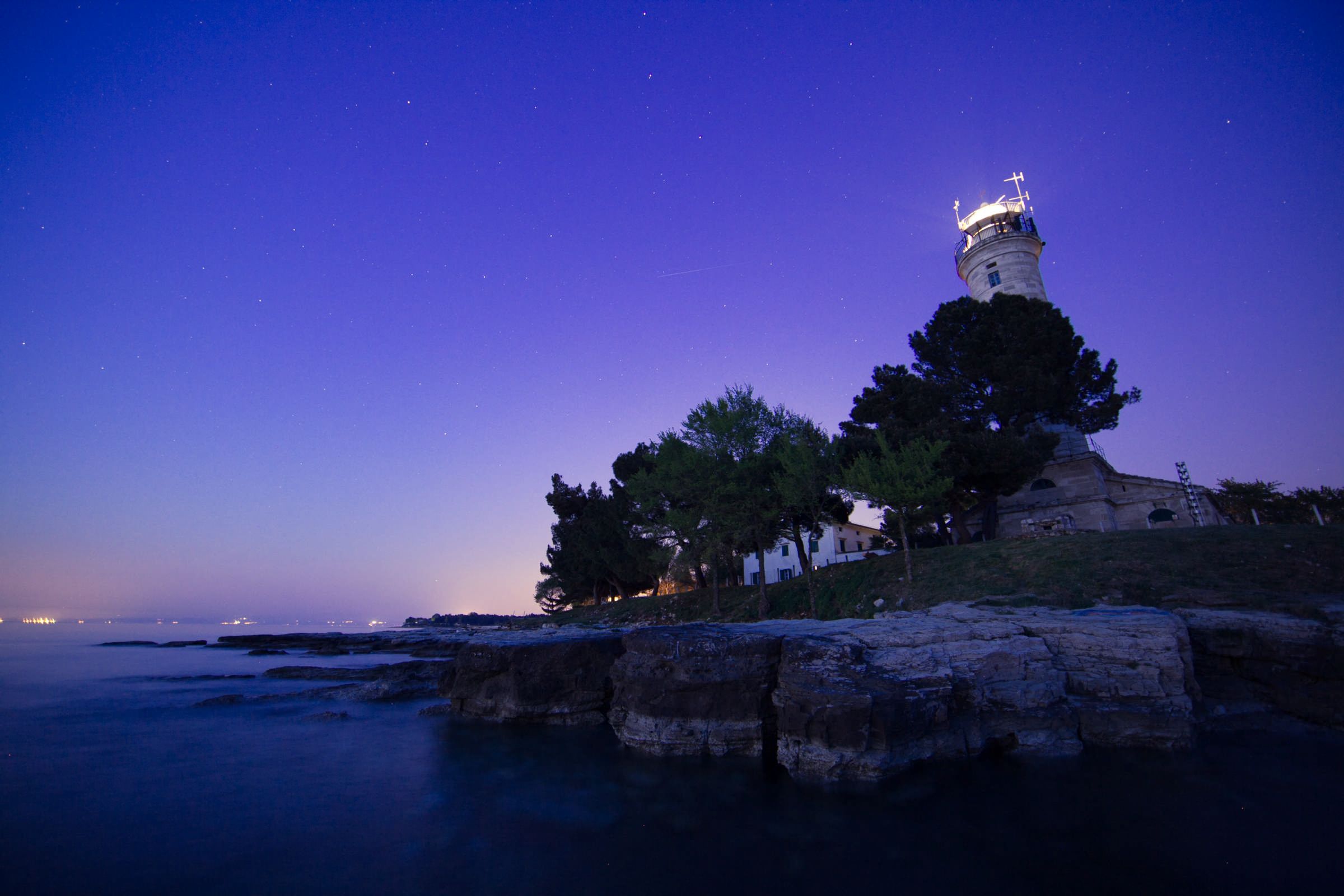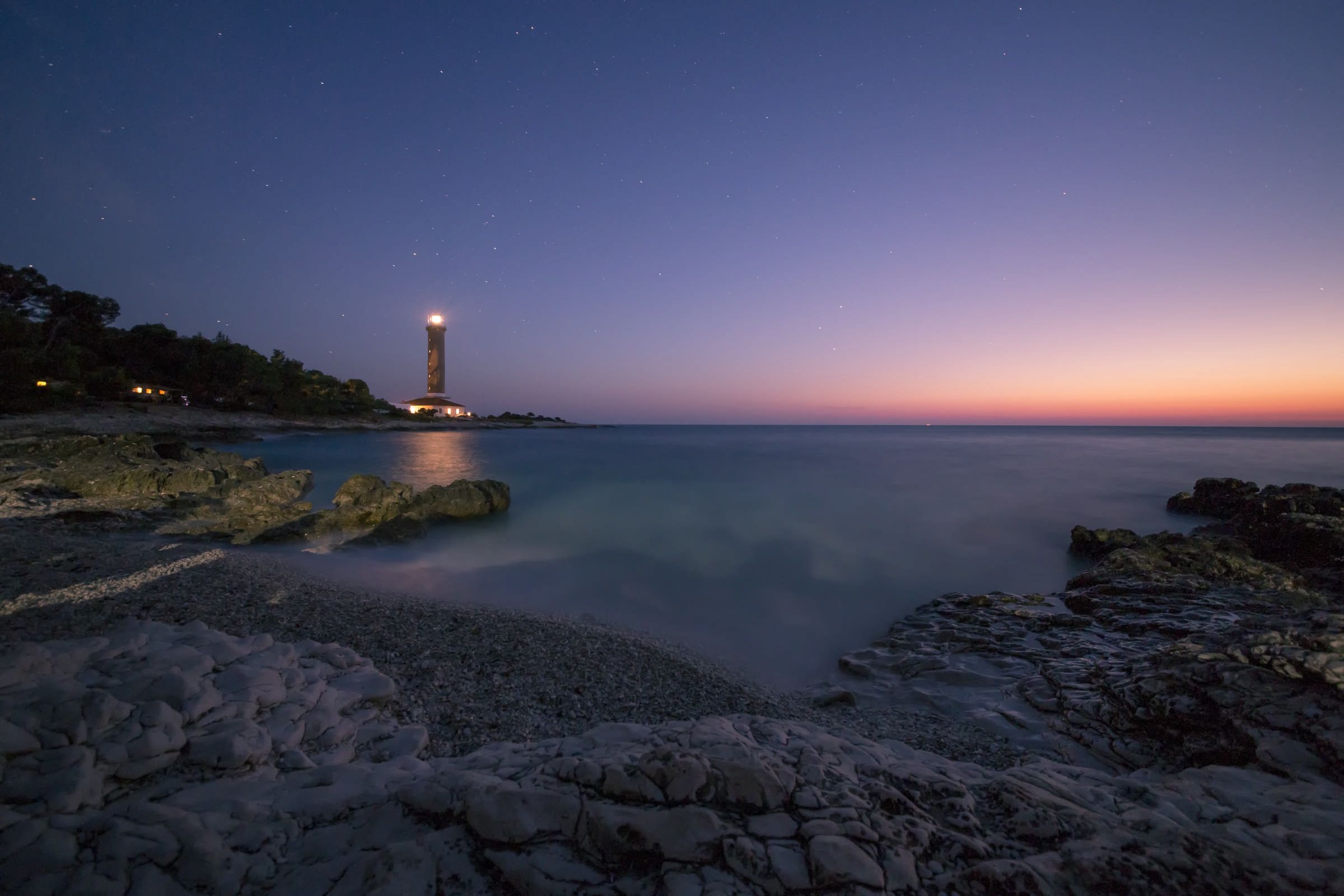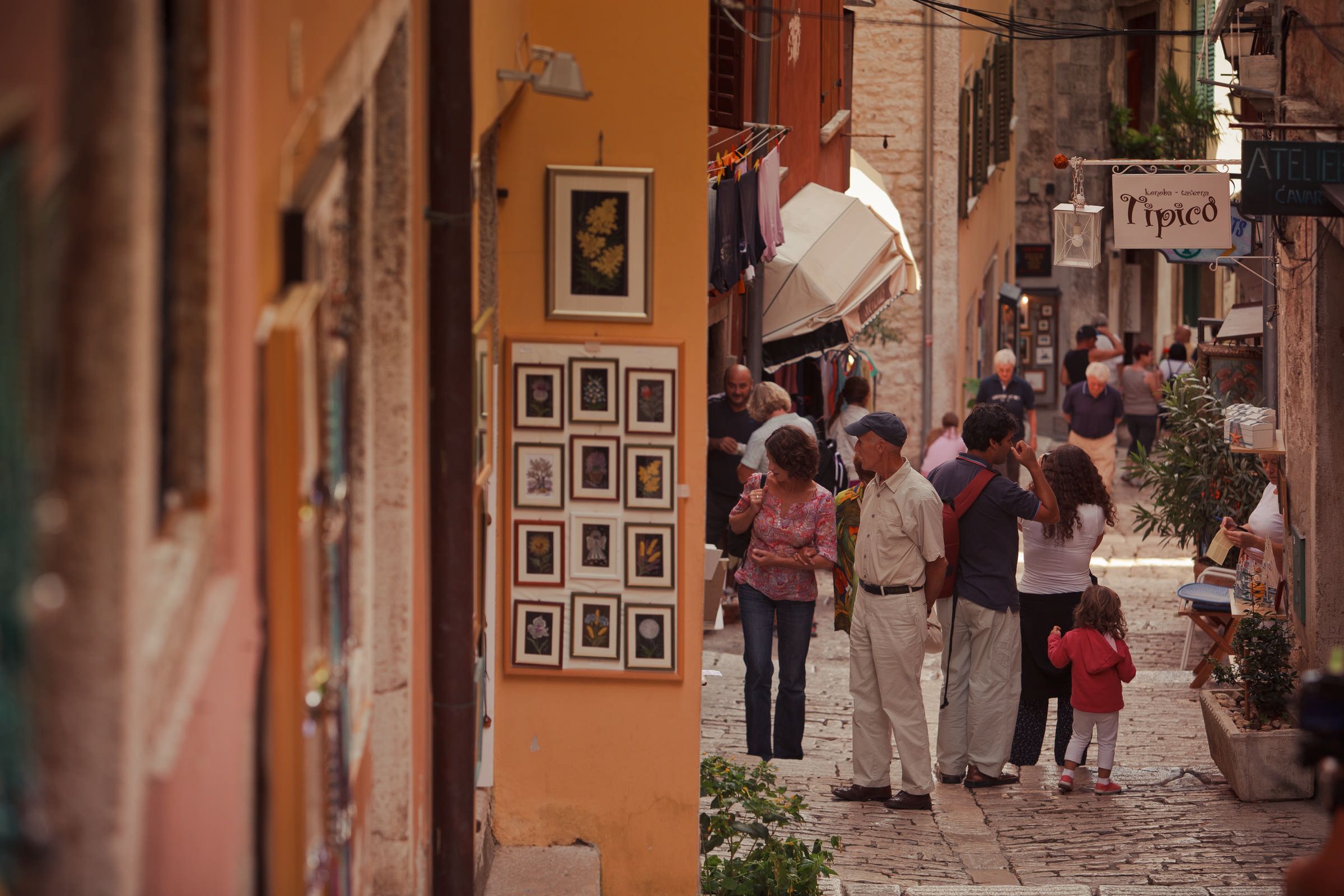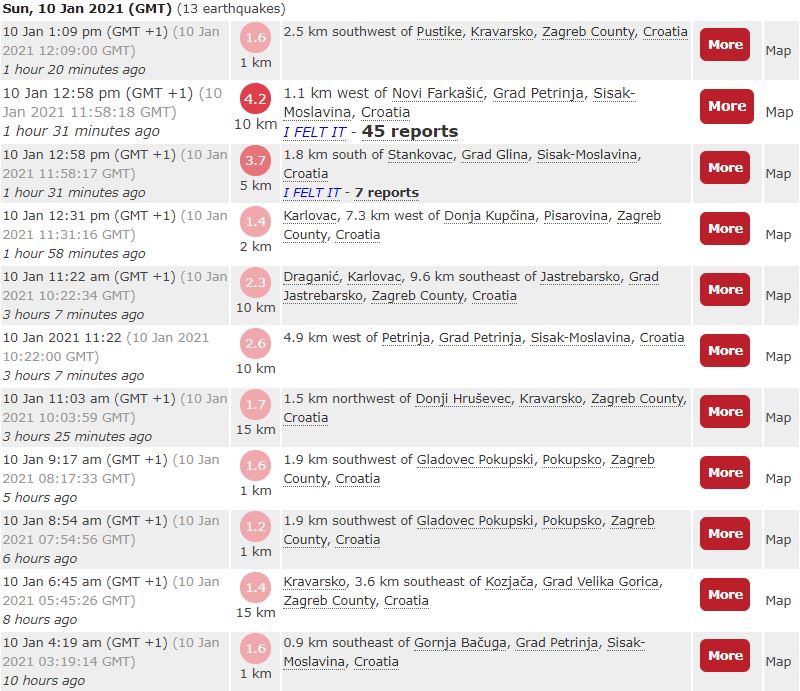What Brought Down the Homes in Banija? The Earthquake or the Corruption?
January 10, 2021 - As the dust around the recently-reconstructed family homes in the Banija region doesn't seem to settle, we keep following the stories in the Croatian media which ask what exactly, if anything, went wrong after the Homeland War with the reconstruction process.
We recently wrote about a segment on a Croatian Radiotelevision show from 1998, in which the quality of the work during the reconstruction of family homes after the Homeland War was brought into question. That is not the only instance when that same question has been raised, and many Croatian media outlets have been writing about the problems faced by those homes.
Many of the homes reconstructed after the Homeland War (in the late nineties) were thoroughly destroyed by the earthquake in the Banija region, although in the nineties there were already laws which clearly stated that any new buildings had to be built to withstand earthquakes like the one we saw back in late December. Many experts in the field, mostly architects, warned that the houses which were built up to code in the late nineties absolutely had to be able to sustain such an earthquake and that it’s important to find out why they haven’t managed to do that. Homeowners from the region, as well as many others, want to find out what happened and why those homes were so vulnerable to the earthquake. Many fingers are now pointing towards Ivo Žinić, the current Sisak-Moslavina County Prefect, who used to be the head engineer for the area in the Ministry for the Reconstruction. His answer to numerous accusations, as quoted in a piece by Jutarnji list is that, according to the official data, none of the houses built after the war have been fully destroyed. He admits that some of them have suffered damage, but because they were being built up-to-code, none of them have actually gone down.
Jutarnji list reporters (in this case Vanja Nezirović) have a different story to tell on the field: they meet a person whose house has almost completely collapsed, with the second floor going down to the first-floor level.
It is important, however, to make a clear distinction between the houses which were fully re-built after 1995, and those that were just reconstructed in order to remove the damage from the war. Those houses that were not fully re-built, but where the old foundations were used and built upon, and they were not reinforced to make them more resistant to earthquakes, rather just made inhabitable as soon as possible. It was even written in the rules, that the goal of the reconstruction was to bring the houses back to the same condition as they were in before the war, without improving anything about the houses.
One of the experts who talked to Jutarnji for their piece, Milan Crnogorac, a construction engineer, explains that many of the houses were improved to what they had been like before the war, but that it still wasn’t enough to make them resistant to an earthquake this strong.
Tvrtko Salitrežić from the company that was in charge of the supervision of the construction works in the Banija region hit by the earthquake says that his company had done everything according to the projects and the laws, that they still have the documentation for those projects they oversaw and that nobody has ever asked to see that documentation. The people of Stražnik showed the journalists their own homes, where the bricks just slipped away because there is no reinforced concrete in the structure of those newly-built houses. Engineer Salitrežić answers that this method of construction was following the laws back then and that it was perfectly fine to have a smaller house without any reinforced concrete within the structure. He adds that Strašnik was, unfortunately, where the epicentre was, and that, according to the information from the field he has, none of the houses they were in charge of went down, while only 20 percent of the houses will have to go through serious reconstruction now, after the earthquake.
Hopefully this time some reinforced concrete will be used in Banija.
Volcano Discovery, Keeping Track of Earthquakes in Croatia and Beyond
January 10, 2021 – Even the most number-obsessed among the people living in Central Croatia have given up on counting the number of earthquakes we’ve felt in the last 15 or so days, but luckily, there are websites to help with that.
Almost every day you see a new article on Total Croatia News about yet another earthquake felt in Croatia. So, how many were there in total? A website named Volcano Discovery (please, let’s not even go there!) keeps valuable statistics, and you can see the most important information here:
On their site, which is regularly updated, they tell us more: “During the past 30 days, Croatia was shaken by 1 quake of magnitude 6.4, 2 quakes between 5.0 and 6.0, 21 quakes between 4.0 and 5.0, 60 quakes between 3.0 and 4.0, and 252 quakes between 2.0 and 3.0. There were also 331 quakes below magnitude 2.0 which people don't normally feel.“ (those numbers will change if there are more earthquakes)
There are many more numbers and graphs you can examine, if that's your thing, to find out more about what's been happening below the feet of the people living in Central Croatia.
To give you an idea of how active things are at the moment, here is the report from the last few hours in Croatia.
For the latest information on the earthquake emergency, follow the dedicated TCN section.
Tower Removed from Sisak Cathedral after Earthquake Damage (VIDEO)
January 10, 2021 - Prime Minister Plenkovic visits earthquake relief efforts, as a tower from Sisak Cathedral is removed.
Prime Minister Andrej Plenkovic was in Sisak today, as he and other senior officials visited the region devastated by the recent earthquakes.
At precisely midday, Plenkovic was among those who watched the removal of the badly damaged bell tower of the Sisak Cathedral of the Exaltation of St. Cross. The 15-ton and 14-meter-high bell tower cap was successfully removed by experts.
As the head of the fire department of the Public Utility Company of the City of Zagreb, Marko Adamcic, who led the action, said, due to the great damage to the structure, it was a very sensitive operation which was preceded by two days of preparations.
Now that the top has been successfully removed, the masonry part of the bell tower will be gradually removed. In order not to endanger the neighboring buildings and protect the citizens, it was decided that the bell tower will not be demolished, but will be removed brick by brick. The intention of the builders is to first remove the upper, most damaged part of the bell tower to the level of the church, and subsequently the remaining part. Since Sisak Cathedral has other major damages, such as the collapse of the vault above the organ and choir, its fate will be decided later.
Also in attendance were Deputy Prime Minister and Minister of Defense Tomo Medved, leaders of Sisak-Moslavina County and the City of Sisak, representatives of the Sisak diocese, and a large number of citizens.
"Given that the tower tilted and posed a threat, this is a somewhat similar operation as in Zagreb at the cathedral. It is an important event and we came to accompany it and give support to the firefighters who are working on it," Plenković said.
For the latest information on the earthquake emergency, follow the dedicated TCN section.
200 Years of Croatian Lighthouses Exhibited in Biograd na Moru
January 10, 2021 – After the initial opening in Umag in 2018, on the 200th anniversary of the lighthouse services on the Croatian coast, the exhibition "More than light and salt – 200 years of Croatian lighthouses" will open in Biograd na Moru.
The exhibition opens on January 12, 2021, at the Homeland Museum Biograd na Moru, regarding Saint Anastasia's feast and a city day. It was also organized regarding the 200th anniversary of the lighthouse service on the Croatian coast, which officially began with the commissioning of a dedicated facility in Savudrija in 1818.
Today, the lighthouse in Savudrija is a protected cultural asset. After two centuries, it testifies to the rich Croatian maritime tradition and the challenges of being a lighthouse keeper, a very rare profession.

Savudrija Lighthouse / Copyright Romulić and Stojčić
To mark this significant anniversary, the exhibition was organized in April 2018 in the Umag City Museum, showing objects from the history of the lighthouse service, documentaries, marine lighting technology, and photographs from private collections.
After the initial opening in Umag, in partnership with the Croatian Maritime Museum Split and the Maritime Waterways Institution Plovput d.o.o., the exhibition was organized in numerous museums along the Adriatic coast – Rijeka, Zadar, Dubrovnik, Split. The last exhibition was held in February 2020 at the Technical Museum Nikola Tesla in Zagreb.
Visitors have the opportunity to see Croatian lighthouses from the period of the countries that once ruled the eastern coast of the Adriatic Sea. For example, the Austro-Hungarian postcards from the collection of the prominent collector, the late Luka Dragičević, and photographs from the extraordinary little-known album of the Croatian Hydrographic Institute.

Lighthouse Veli Rat, Dugi otok / Copyright Romulić and Stojčić
The exhibition touches on questions about how lighthouses' construction changed the locations where they were built and how the lighthouses themselves changed through wars, modernization of technology, and man's abandonment due to automation.
In addition to exhibits that testify to the long list of duties of today's extremely rare profession of lighthouse keepers, a documentary material is presented that provides valuable information about lighthouse keepers' activities throughout the last century: living and working in almost unimaginable conditions.
The significance of this vocation in the 21st century is thematized on the example of today's Savudrija lighthouse keeper Mario Milin Ungar, who is the fifth generation of lighthouse keepers in his family.
The exhibition dedicated to Croatian lighthouses will be open until February 28, 2021, and the opening event will be held in compliance with prescribed epidemiological measures.
Source: Biograd na Moru
To read more about lifestyle in Croatia, follow TCN's dedicated page.
Croatia Marks Increase in Demand for High Quality and Expensive Tourist Offer in 2020
January 10, 2021 – Despite pandemic and earthquakes, the number of well-to-do guests in Croatia in 2020 grew. They spent 98 euros a day, 32 more euros than six years ago, and they were looking for the highest quality and the most expensive tourist offer.
As Radmila Kovačević / Večernji list writes, a thin but much better tourist season than it seemed in the spring brought Croatia 7.7 million guests and about 54 million overnight stays in eleven months. Every other overnight stay from the record 2019 was realized.
The earthquakes did not have a particular impact on the number of guests. The last month of the year, regardless of the disaster, could not bring any fundamental change. Excluding Zagreb Advent and New Year's guests on the Adriatic, the number of tourists in December varied between a modest seven and ten thousand a day, which was about a third of the tourist traffic last year in that month.
Croatia is a discovery in terms of offer and quality
About 3,000 foreign tourists are sharing the current earthquake drama with the local population. The atypical year has intensified some trends, and one of them is undoubtedly digital nomads. Among those 3,000 foreigners are hundreds of guests who do their regular jobs from Croatia.
An increase in demand for holidays in separate villas and holiday homes was expected, given the pandemic. Still, many hosts were surprised by the jump in demand for the highest quality and the most expensive of what Croatian tourism offers.
Hosts first noticed this in Istria, wherein some weeks this summer, it was practically impossible to find a free bed in luxury holiday homes or small family hotels.

Tourists in Rovinj / Copyright Romulić and Stojčić
It was similar in restaurants – well-to-do guests did not skimp on olive oil, wine, prosciutto, and similar treats as a "souvenir "from a Croatia vacation. Many of these guests said that they regularly go to some of the more famous Mediterranean resorts and that Croatia, in this case, Istria, is a discovery for them, both in terms of offer and quality.
Continental destinations can be profitable
The transformation of the domestic tourist offer from mass, ready-made to more refined, boutique offer is not since yesterday. This is evidenced by the growing revenues from tourism, i.e., the average consumption of our guests.
For comparison, in 2014, tourists spent an average of 66.3 euros a day on vacation in Croatia. Three years later, in the 2017 season, average tourist spending jumped to 79 euros per person per night. And according to the recently published comprehensive survey Attitudes and Consumption of Tourists, published on the new interactive website of the Institute of Tourism, guests in Croatia spent as much as 98 euros a day from May 2019 to March 2020.
Tourists in Rovinj / Copyright Romulić and Stojčić
For the first time, the research was conducted outside the summer months and in the whole of Croatia, not only on the coast. It also revealed how profitable tourism in the interior could be than at sea. Namely, it turned out that in 2019 guests spent an average of 97 euros a day on holiday in coastal destinations, and in continental destinations, such as Slavonia or Zagorje, 115 euros per person.
BiH Guests, who spent 67 euros per person per day, had the smallest budget for holidays in Croatia. The most generous guests were the Japanese, with daily consumption of as much as 206 euros. The generous guests include tourists from the USA with 174 euros per person, the Republic of Korea (157 euros), China (150 euros), and Asian countries in general, whose average consumption is 155 euros. Among Europeans, the British stand out with daily consumption of 143 euros.
First guests already for the Easter holidays?
Altogether, a good start for 2021, in which the tourist sector, which these days are busy helping the victims in Banovina, could expect the first wave of guests as early as in the Easter holidays.
"The number of 54 million overnight stays is proof that our tourism has quickly and efficiently adapted to the new circumstances. Croatia was recognized as a safe destination, and we must work on that in 2021, and then again, we can expect good results. Glad the fact that tourist spending is growing. Our goal is the same or higher revenues than in 2019. But not through an increase in the number of tourists in the summer, but by a more even distribution throughout the year and throughout Croatia," commented the Minister of Tourism and Sports Nikolina Brnjac.
For the latest travel info, bookmark our main travel info article, which is updated daily.
Read the Croatian Travel Update in your language - now available in 24 languages.
Grlic Radman: Croats Have Shown Unity Like in Wartime
ZAGREB, 10 January, 2021 - Croatian Foreign Minister Gordan Grlic Radman has said that Croatia and Croatian communities abroad have demonstrated such unity after recent earthquakes as they did in the 1991-1995 Homeland War, expressing satisfaction with the solidarity of EU member states.
"This shows that we can be together when it's most difficult. In such situations we are as one, Croatian hearts beat as one. During the earthquakes Croats were together just as they were in 1991," Grlic Radman said in an interview with the Mostar-based Bosnian Croat television channel Televizija Herceg-Bosne aired on Sunday.
He said that many Croats, Croatian organisations and Croatian Catholic missions abroad had responded a day after a magnitude 6.2 earthquake struck central Croatia on 29 December, opening special bank accounts and sending humanitarian aid.
"That's why we owe a debt of gratitude to the Croats abroad. We rely on each other when needed, here in particular we mean the Croats in Bosnia and Herzegovina," Grlic Radman said.
He said that after the earthquake Croatia again became aware of the advantages of European Union membership.
"The level of solidarity is above expectations. Croatia can be pleased with how solidarity was shown because of the feeling that we are not alone," Grlic Radman said, stressing that many non-EU countries had also offered their assistance after the earthquake.
Croatia Registers 646 New Coronavirus Infections, 26 Deaths
ZAGREB, 10 January, 2021 - Over the past 24 hours, Croatia has registered 646 new cases of coronavirus infection and 26 deaths, the national COVID-19 crisis response team said on Sunday.
The number of active cases in Croatia today stands at 5,499. There are 2,131 COVID patients in hospitals, including 193 on ventilators.
Since 25 February 2020, when Croatia registered its first case of the infection, a total of 219,993 people have contracted the novel coronavirus, 4,368 have died and 210,126 have recovered, including, 919 in the last 24 hours. There are currently 18,147 people in self-isolation.
To date, 1,077,777 people have been tested, including 7,215 in the last 24 hours.
Slovenian and Austrian Firefigthers Bring Aid for Earthquake Victims
ZAGREB, 10 January, 2021 - In a humanitarian campaign organised by the Breznicki Hum Municipality with the help of a Slovenian volunteer firefighters association, PGD Paloma Sladki Vrh, and Austrian OBR fire brigade, 24 trucks and vans on Saturday delivered aid for people in the quake-hit areas of Sisak, Petrinja and Glina.
The convoy entered Croatia on Saturday morning at the Dubrava Krizovljanska border crossing.
According to the press release, the convoy, accompanied by police, delivered large quantities of construction materials, construction tools, beams, planks and slats, generators and heaters, textiles, pillows, blankets, field beds, food, water and numerous other necessities for the many inhabitants of the quake-hit area.
Upon arrival at the storage terminal of a company called NIL-Z in Petrinja, they were welcomed by Petrinja Mayor Darinko Dumbovic, who thanked them for collecting and delivering valuable help.
The secretary of the Slovenian firefighters association, Valentina Oslovnik, its commander, Robert Oslovnik, and the commander of Austrian OBR fire brigade, Johannes Matzhold, expressed their satisfaction with participating in the campaign.
The head of Breznicki Hum Municipality, Zoran Hegedic, thanked the participants of the campaign and firefighter from Breznicki Hum, Slovenia and Austria.
Hegedic also thanked the Croatian customs for the excellent cooperation during the arrival of the convoy, Croatian police for accompanying them and all those who helped in any way.
Entire Shipment of Moderna's Vaccine to be Sent to Quake-Hit Banovina, Daily Says
ZAGREB, 10 January, 2021 - Sisak-Moslavina County has been given priority in the vaccination process and next week a complete shipment of Moderna's vaccine will be sent to the earthquake-hit county, Jutarnji List daily said on Sunday.
The number of coronavirus infections in Sisak-Moslavina County has jumped from 60 to 124 in the past two days. The increase has been expected as it was impossible to comply with epidemiological measures after a 6.2-magnitude earthquake struck the area on 29 December. The priority was to save human lives, clear the rubble and provide people with temporary accommodation.
It is still difficult to comply with epidemiological measures in that county due to a high fluctuation of people. That is why the county was given priority in the testing process and the ongoing coronavirus vaccination process.
"More than a thousand people were vaccinated in that county on Thursday alone. We are doing everything we can to keep the epidemiological situation under control. Also, we have sent large quantities of rapid antigen tests there. We have sent six teams to perform rapid antigen tests in the quake-hit area," the head of the Croatian Public Health Institute (HZJZ), Krunoslav Capak, told Jutarnji List.
He announced that a complete shipment of Moderna's vaccine would be sent to that county next week.
To date, 30,000 people have been vaccinated in Croatia, while 3,036 people were vaccinated in Sisak-Moslavina County alone by Friday night. A new shipment of 17,550 doses of the vaccine produced by Pfizer/BioNTech will arrive on Monday, and 4,000 doses of Moderna's vaccine will arrive on Tuesday.
"We have talked with the prime minister and I think that Moderna's entire shipment will go to Sisak-Moslavina County. A week later another 17,550 doses of the Pfizer/BioNTech vaccine and another 6,000 doses of Moderna's vaccine will arrive in Croatia," Capak said.
However, mass vaccination in Croatia will commence only after AstraZeneca registers its vaccine. The first shipment of that vaccine was supposed to arrive in EU countries, including Croatia, at the end of December, but the manufacturer is still waiting for approval from European regulators. According to unofficial information, the vaccine should be registered by the end of January, and when distribution begins, more than 200,000 doses should arrive in Croatia in their first shipment (of a total of 2.7 million that Croatia ordered from that manufacturer), Jutarnji List said.
Learning Croatian: the Dialect Words of Hvar Wine (VIDEO)
January 10, 2021 - Continuing our alternative look at the Croatian language through Hvar dialects, some essential vocabulary relating to Hvar wine.
One of my favourite features over the last ten years writing about Croatia is a language series we started soon after the launch of Total Hvar way back in 2010.
Sitting in The Office in Jelsa one quiet November lunchtime, I decided to film my friend with some typical Dalmatian greetings.
The unique phenomenon that is the Dalmatian Grunt hit the Internet and a new online start was born. The linguistic colossus that is Professor Frank John Dubokovich, Guardian of the Hvar Dialects, quickly amassed 50,000 views on YouTube, and a fascinating series of lectures followed, until they were inexplicably removed from YouTube a few years ago.
Thankfully, I came across some of the offline originals recently and have been publishing them again.
Today's lesson focuses on the dialect words for Hvar wine. In some ways, it is a landmark lesson, since it was the first to be independently commissioned by someone else.
The Professor's fame had spread so far that national television came calling, and they requested that we record an exclusive lesson for them about Hvar wine for a forthcoming primetime feature on tourism in Jelsa.
The Professor was eager to please and was eager to expand his ever-expanding flock. We thought that the best place to record was at Artichoke Wine Bar and Restaurant in Jelsa, which became the first place the island to offer Hvar wine by the glass soon after it opened several years ago.
You can check out the Professor's latest foray into the world of Hvar wine above, as well as checking out the entire feature on Jelsa, the only time in my life I have ever been recorded eating blitva.
You can catch up with The Professor's teachings on our TCN Talks YouTube channel.
For more news from Hvar, check out the dedicated TCN section.



